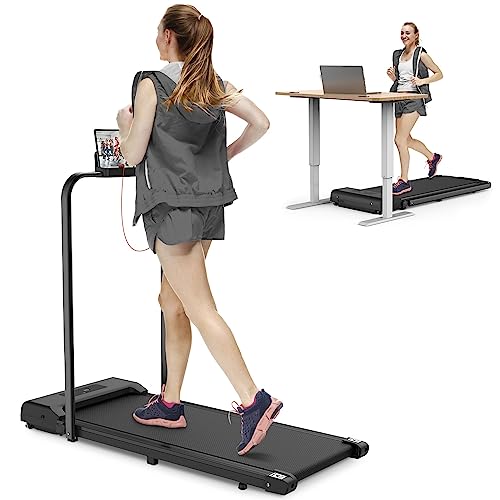This company has no active jobs
0 Review
Rate This Company ( No reviews yet )
About Us
The 10 Most Scariest Things About New Treadmill

The Essential Guide to Buying a New Treadmill: What You Need to Know
As physical fitness lovers continue to seek versatile and effective methods to keep their physical health, treadmills remain a staple in home and industrial health clubs alike. The technology and features of treadmills have advanced substantially in recent years, making now an exceptional time to consider investing in a new treadmill. This short article intends to assist possible buyers through necessary elements to think about, various kinds of treadmills available, and often asked questions to guarantee they make an informed option.

Comprehending Treadmill Types
Before delving into specific brand names, it’s worth comprehending the primary kinds of treadmills readily available in the market. This introduction will help people figure out which type best fits their fitness needs and spending plan.
1. Manual Treadmills
- Description: These treadmills do not depend on electrical power and are powered entirely by the user’s motion.
- Pros:
- Generally cheaper.
- Compact and lightweight, making them simple to store.
- Cons:
- Limited features compared to motorized treadmills.
- Less ideal for high-intensity exercises.
2. Motorized Treadmills
- Description: These treadmills come equipped with electric motors that facilitate movement and enable adjustable speed settings.
- Pros:
- Offer a broad range of speed and slope alternatives.
- Typically geared up with innovative technology, including exercise programs and heart rate displays.
- Cons:
- More pricey and require more upkeep.
- Heavier, making them hard to move.
3. Folding Treadmills
- Description: These treadmills can be folded for benefit, making them an exceptional choice for those with restricted space.
- Pros:
- Space-saving style.
- Still offers motorized choices.
- Cons:
- May sacrifice some stability and resilience for portability.
4. Commercial Treadmills
- Description: Designed particularly for fitness centers and physical fitness centers, these treadmills are constructed with more long lasting materials.
- Pros:
- High-quality construction and durability.
- Functions developed for extensive usage.
- Cons:
- Generally more pricey and bigger in size.
Contrast Table of Treadmill Types
| Treadmill Type | Source of power | Key Features | Rate Range | Ideal For |
|---|---|---|---|---|
| Handbook | None | Standard functionality | ₤ 100 – ₤ 500 | Newbies, budget users |
| Motorized | Electric | Adjustable speed/incline | ₤ 500 – ₤ 3,000 | All fitness levels |
| Folding | Electric | Space-saving functions | ₤ 300 – ₤ 1,500 | Restricted area users |
| Industrial | Electric | Resilience and performance | ₤ 1,500 – ₤ 8,000 | Health clubs, heavy use |
Secret Features to Look For
When purchasing a new treadmill, several key functions should be thought about:
-
Motor Power (HP): A more powerful motor (at least 2.5 HP) is essential for running and for users who prepare to utilize the treadmill regularly.
-
Running Surface: Consider the size of the belt. A longer and larger running surface can accommodate longer strides and supplies better security.
-
Incline Options: Adjustable slope can add strength to exercises and target various muscle groups.
-
Exercise Programs: Many treadmills offer integrated exercise programs that can assist users through numerous exercises and regimens.
-
Display Features: A clear screen enables users to track their speed, distance, calories burned, and heart rate more quickly.
-
Cushioning: Adequate shock absorption can lower the threat of injury and provide a more comfy running experience.
-
Innovation Integration: Features like Bluetooth connection, mobile app integration, and built-in speakers can enhance the workout experience.
Regularly Asked Questions (FAQs)
Q1: How much should I budget for a treadmill?
A: Budget can vary based upon features and quality. Manual treadmills begin around ₤ 100, while motorized models can range from ₤ 500 to ₤ 3,000, depending upon advanced features.
Q2: How typically should I preserve my treadmill?
A: Regular maintenance, consisting of oiling the belt and inspecting the motor, need to be done monthly. Check the treadmill for wear and tear regularly.
Q3: Can I lose weight with a treadmill?
A: Yes, regular use of the treadmill, integrated with a healthy diet, can aid with weight reduction. Including interval training increases intensity and calorie burn.
Q4: Is it better to operate on a treadmill or outdoors?
A: Both have benefits. Treadmills offer a regulated environment and cushioning, while outdoor running offers diverse surroundings and natural inclines.
Q5: Do I need unique shoes for utilizing a treadmill?
A: While particular treadmill shoes aren’t required, wearing good-quality running shoes designed for support, cushioning, and stability is a good idea.
Buying a new treadmill can substantially impact one’s physical fitness journey, providing chances to work out in the house despite weather conditions. By understanding the types of treadmills readily available and considering important features, individuals can pick a design that fits their lifestyle and fitness goals. Whether aiming for casual walks or intense running sessions, the right treadmill can change workout regimens, making them more enjoyable and reliable. With the increase in innovation and ingenious styles, the treadmill stays an ageless and important tool in personal physical fitness.
